Hydrus, the Male Water Snake, is a small, faint and unremarkable constellation in the southern hemisphere. It’s circumpolar, and is therefore visible throughout the year, but is best seen from late October to mid-December.
A modern constellation that dates back to the late 17th century, its brightest star, Beta Hydri, holds the distinction of being the closest reasonably bright star to the south celestial pole, but otherwise there’s very little of interest here.
Hydrus – Key Data
Name
| Latin | English | Pronunciation | Genitive | Abbreviation |
| Hydrus | The Male Water Snake | HIGH-drus | Hydri | Hyi |
Location
| Hemisphere | Best Seen | R.A. | Declination |
| Southern | Late October to Mid-December | 02h 20m 14s | -72° 53’ 44” |
Features
| Area | Size Rank | # of Messier Objects | # of Stars Brighter than Mag 4 | Brightest Star |
| 243 sq. Deg. | 61st | 0 | 3 | Beta – Mag 2.8 |

Top Hydrus Facts
- A modern constellation, it was first introduced in the late 16th century
- Hydrus is a circumpolar constellation in the southern hemisphere
- It ranks 61st in size out of the 88 constellations
- Beta Hydri is the closest bright star to the southern celestial pole
- It contains no deep sky objects worthy of observation
Hydrus in Mythology
Hydrus is a modern constellation in the southern hemisphere and, consequently, was not known to the Greeks and has no myths associated with it.
Hydrus in History
To all intents and purposes, Hydrus did not exist until the late 16th century. Prior to that, the Chinese saw various parts of a snake here, while the German astronomer Julius Schiller formed Raphael, a Biblical constellation, from its stars, the neighboring stars of Tucana and the Small Magellanic Cloud, in the early 17th century.
Schiller’s creation competed against (and ultimately lost to) Hydrus, the constellation we know today.
The Dutch explorers Pieter Dirkszoon Keyser and Frederick de Houtman observed its stars during an expedition to the East Indies from 1595 to 1597, and named it for a snake they had seen there. This then led the Flemish astronomer Petrus Plancius to plot it on a celestial globe, either in late 1597 or early 1598.
Johann Bayer was the first to include it in an atlas, when he published his Uranometria in 1603, with De Houtman naming it the “water snake” later that year.
A little over 150 years later, the French astronomer Nicolas-Louis de Lacaille charted the southern stars from the Cape of Good Hope between 1754 and 1756. This included the stars of Hydrus, to which he attributed their Bayer designations (Alpha, Beta, etc) based upon his observations.
Lacaille was also the first to refer to the constellation as the male water snake, to avoid confusing it with the better known constellation Hydra, which represented a female snake.
Hydrus, along with the other 87 constellations, was officially recognized by the International Astronomical Union in 1928.
When & How to See Hydrus
Hydrus is circumpolar for much of the southern hemisphere, and is therefore visible throughout the entire year. However, it is highest over the southern horizon from late October to mid-December.
It’s not a bright constellation at all, but its two brightest stars, Alpha and Beta, are both a little brighter than magnitude 3 and should be visible from suburban skies.
To find Hydrus, it’s a good idea to first find the Small Magellanic Cloud (SMC) and Achernar, the brightest star in Eridanus, the River.
The SMC is located in neighboring Tucana, very close to that constellation’s southeastern border, and appears near the southwestern corner of the triangular Hydrus. Beta Hydri, the constellation’s brightest star, is just four degrees to the south of the cloud and is the only reasonably bright star in the area.
Alternatively, you can find Alpha Hydri five degrees to the south of the aforementioned Achernar. Like Beta, there are no other bright stars nearby.

Hydrus’ Notable Stars
| Bayer/Flamsteed Designation | Name (s) | Mag | R.A. | Dec. | Distance (LY) | Notes |
| Beta / N/A | 2.8 | 00h 26m 42s | -77° 07’ 43” | 24.3 | Brightest star and closest bright star to the celestial south pole. | |
| Alpha / N/A | Head of Hydrus | 2.9 | 00h 26m 42s | -61° 27’ 34” | 71.8 | Second brightest star. |
| Gamma / N/A | 3.3 | 03h 46m 55s | -74° 10’ 06” | 214 | Third brightest star. | |
| Pi1 / N/A | 5.6 | 02h 14m 44s | -74° 10’ 06” | 780 | Forms a binocular optical double star with Pi2 Hydri. |
Beta Hydri
As is the case with some constellations, the brightest star in Hydrus is not actually Alpha, but rather Beta Hydri. This magnitude 2.8 star has a yellowish hue, and is the closest star brighter than magnitude 3 to the southern celestial pole.
This makes it visible from the suburban skies of the southern hemisphere, and while it’s no substitute for Polaris in the north, it can still serve as a means to gain an approximate idea of which way is south. However, since it lies about 12 degrees from the pole, it would be wise not to rely on it for precision directions!
This G2 IV star is roughly the same mass as the Sun, but is thought to be nearly twice as wide and have three times its luminosity. It’s also thought to be older – about 6.4 billion years old – making this an object of interest for astronomers, as it could provide a glimpse into our Sun’s future, some two billion years from now.
Lastly, there was some speculation that the star might have a planetary system (or at least a substellar companion), but as yet, nothing has been detected.
Alpha Hydri
The constellation’s second brightest star, Alpha is only slightly fainter than Beta (mag 2.9 compared to mag 2.8, respecitvely) making the two appear virtually the same to the naked eye.
However, while Beta can be found close to the southern celestial pole, Alpha lies some distance further away. That said, it has one distinct advantage over Beta: it lies just five degrees to the southeast of Achernar, the brightest star in Eridanus, the River. This makes the star (and, potentially, the constellation as a whole) relatively easy to find.
Alpha Hydri is informally known as the Head of Hydrus, a name derived from the Chinese, who saw the asterism formed by Alpha Hydri and Beta Reticuli as forming the head of a snake.
At a distance of 71.8 light-years, Alpha is one of the closest stars to the Sun. It’s a white subgiant star with a stellar classification of F0 IV, roughly 810 million years old, that’s about two and a half times the size of the Sun and a little more than 1.5x more massive.
Gamma Hydri
At magnitude 3.3, Gamma is the third brightest star in Hydrus. It’s an M1 III red giant star, some 214 light-years away, that has roughly the same mass as the Sun but could be over 70 times its size.
As a mature star in the later stages of its life, it’s pulsating and shows some variability, but the changes are slight (from magnitude 3.26 to 3.33) and irregular, making the variability undetectable to the naked eye.
Pi1 Hydri
Pi1 Hydri forms a wide double star for binoculars with Pi2 Hydri. The two stars are both coppery in color and appear of equal brightness, but Pi1 is actually slightly brighter (mag 5.6 compared to 5.7.) These are two unrelated stars, with Pi1 lying at a distance of roughly 780 light-years and Pi2 some 300 light-years closer.
Hydrus’ Deep Sky Objects
Unfortunately, there are no deep sky objects worthy of observation in Hydrus.

